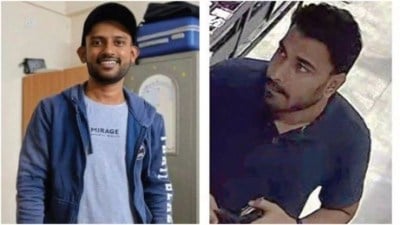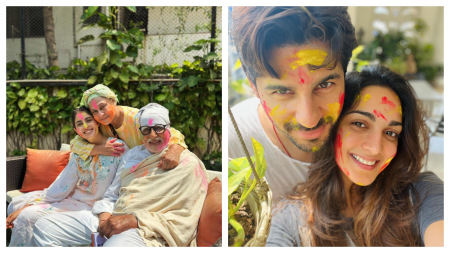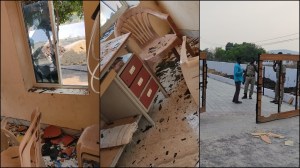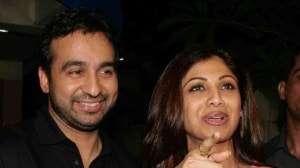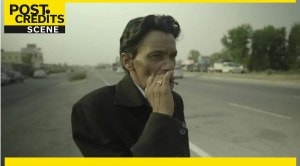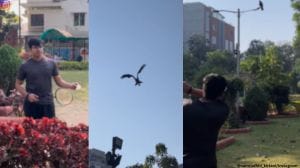- India
- International
Remembering Vijaya Mulay (1921–2019)
Vijaya Mulay, who passed away on Sunday, was an important figure in India’s film society movement. With the likes of Satyajit Ray and Marie Seton, she was a part of various film societies such as Patna and Delhi Film Society and was also president of Federation of Film Societies of India. We remember the eminent film historian, documentary filmmaker, writer and educationist, who shaped and refined film sensibility in India.
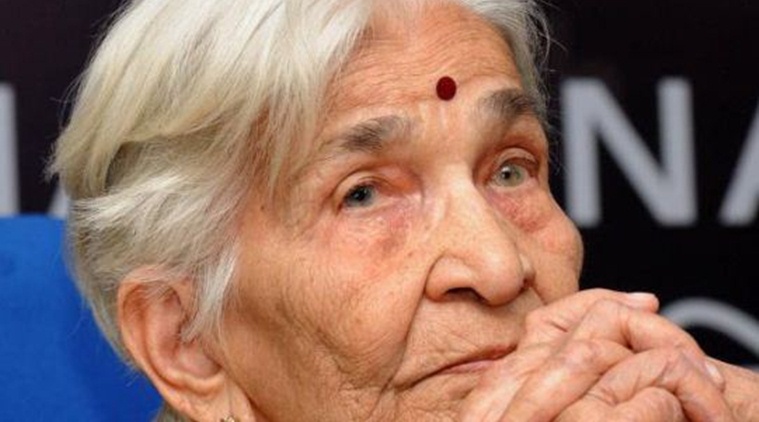 Vijaya Mulay passed away on Sunday in New Delhi. (Photo: Upperstall/Twitter)
Vijaya Mulay passed away on Sunday in New Delhi. (Photo: Upperstall/Twitter)
At the 2012 National Film Awards, Vijaya Mulay—Akka to film enthusiasts across India—was the head of the jury for best writing on Indian cinema. In her address at the award function at the prestigious Vigyan Bhavan, she blasted the festival directorate. The reason? Their lackadaisical approach towards distinguishing between ‘blog writing’ and ‘serious journal writing’ had forced the jury to go through thousands of articles to select one for the award. She ended her speech advising the festival directorate to wake up to new media realities and sort out the confusion, much to the surprise of the audience—which included the then president of India, Pranab Mukherjee.
That was Mulay—frank, straightforward and rebellious, even in her 90s, and wanting to reform and standing up for what she strongly believed in. For the film society movement, she was as important as the British film critic and Satyajit Ray’s biographer Marie Seton. Akka worked with Seton to ensure the formation of Delhi Film Society (DFS), Federation of Film Societies of India (FFSI) and spread of film society movement. Along with Ray and film critic Chidananda Dasgupta, Mulay ensured government patronage to the budding film society movement in Delhi. From the formation of two pioneering societies, in Delhi and Patna, to the formation of FFSI and the growth of the movement, there is nothing which does not have her imprint. She was also a one-time president of FFSI and a vice president of FFSI (northern region).
“On my return (from the University of Leeds, UK) to Patna in 1949, I actively participated in the nascent film society movement of India. Film societies were the only institutions where cinema different from the commercial run-of-the-mill kind could be seen. Some of us, therefore, started the Patna Film Society. When I was appointed as the Education Officer to the Central Ministry of Education and moved to Delhi in 1954, I found more like-minded people like myself and we started the Delhi Film Society. Later when eight film societies came together to form the Federation of Film Societies of India in 1959, with Satyajit Ray as its founding President, Chidananda Dasgupta, the well-known film critic and founder member of the Calcutta Film Society, and I were elected as the first joint secretaries,” Vijaya Mulay recalled her initial days with film societies in a Nation Film Archive project As Others See Us: Films on India.
“We were all building the new India and never thought our efforts will lead to a movement or new genre of films. But we did our part,” a nonagenarian Mulay told the author in a series of interviews. Akka’s reflections gave a sense of the period and history to the film society movement. Indeed, it was all a patriotic act by a generation that saw the transition from colonial to self-rule of India, and film society movement for Akka and her friends was a search for new Indian idiom in Indian films, different from the mythological films and melodramas of the nascent film industry of the British Raj and early days of the new republic.
Her biographers describe her as an eminent film historian, a documentary filmmaker, writer and educationist, who has shaped how India is viewed by Indian and non-Indian filmmakers. Born in the summer of 1921 in Bombay (now Mumbai), Vijaya Mulay was a dear friend to Satyajit Ray, the French film-maker Louis Malle, the Bengali director Mrinal Sen, who passed away last year and other film personalities. It was under their influence that Mulay was able to shape a unique perspective of Indian cinema which greatly influenced her work.

In 1940, Akka accompanied her husband to Patna, in Bihar, owing to a transfer of job. For her, the pre-independence scene in Patna was a complete contrast to the cosmopolitan Mumbai. But luckily for her, Patna University did allow women to study privately and that bestowed Akka with an opportunity and she enrolled for a bachelor’s degree. In Patna, bioscopes aired English films at half prices on Sunday mornings and it was there that Akka’s love affair with cinema started as she began grasping the idiom of cinema.
As the wheels of time rolled on, Mulay won a state scholarship to study at the University of Leeds. In 1946, she moved to the United Kingdom for a master’s degree in education. The experience that she gained in the UK was quite different to the ‘burra sahibs’ (elite and well-off people) back home. “I was fortunate to be in England at a time when the performing arts were reflecting new ideas and techniques. The Unity Theatre of workers played to full houses. Films from Soviet Union and Eastern Europe were running in repertory theatres. I also gained a better perspective and understanding of cinematic art by joining the Leeds University Film Society. Thus, film viewing, which was just a pastime before, became a serious passion,” Akka wrote in the National Film Archive project As Others See Us: Films on India.
In 1949, Vijaya Mulay had returned to Patna where she went on to work actively in the local film society. However, in 1954, she shifted to New Delhi as she was appointed as the Education Officer by the Government of India. Her love for cinema drove her to find time for films and she not only founded the Delhi Film Society, but soon-after in 1959, she—along with Ray and Dasgupta—founded and led the FSSI. Mulay later even went on to become its president in 2000. The year 1962 saw Akka working in Bombay at the CBFC. Her work at the Censor Board proved a mixed blessing, giving her an insight into the biases of panellists that coloured their judgements of a film’s suitability for public viewing.
In 1967, she met the celebrated Louis Malle in Kolkata during a visit with a French film delegation. The two would not only become lifelong friends, but it was Malle and Ray who assisted Akka in making her first film The Tidal Bore, based on the tidal bore that rose from the Bay of Bengal and hit the Hooghly river like a huge wall of water. The Tidal Bore found its official entry in the Manheim Film Festival from India, and was also screened across the country by the Film Federation of India.
Given her expertise in cinema and vision for broadcasting, Vijaya Mulay was roped in for India’s first experiment with Satellite Instructional Television Experiment (SITE), which brought satellite-based TV into India in the mid-1980s. She was hired by UNICEF to test modules for children, and by 1975, she was appointed as the head of Centre for Educational Technology (CET).
CET prepared educational films for broadcast to over 2,400 villages in rural districts and programming in four languages. Amongst them, the animation film Ek Anek Aur Ekta, scripted in 1974 and directed by Mulay herself, is well known. In 2002, Akka was conferred with the honour of the V. Shantaram Lifetime Achievement Award for documentaries at the Mumbai International Film Festival (MIFF) by the government of India.
Today, Vijaya Mulay’s name stands tall along with all the other pioneering figures of Indian cinema in the 1940s and 1950s. Apart from the likes of Satyajit Ray, Chidananda Dasgupta and the eminent film critic Prof. Satish Bahadur, there were only a few people who contributed as much to the emergence of good film sensibility in India—and placing Indian films firmly on the global map—as Akka.
This article is an edited excerpt from V.K. Cherian’s book India’s Film Society Movement: The Journey and its Impact (SAGE Publications India, 2016) and is part of Saha Sutra on http://www.sahapedia.org, an open online resource on the arts, cultures and heritage of India.
Photos
Apr 18: Latest News
- 01
- 02
- 03
- 04
- 05











